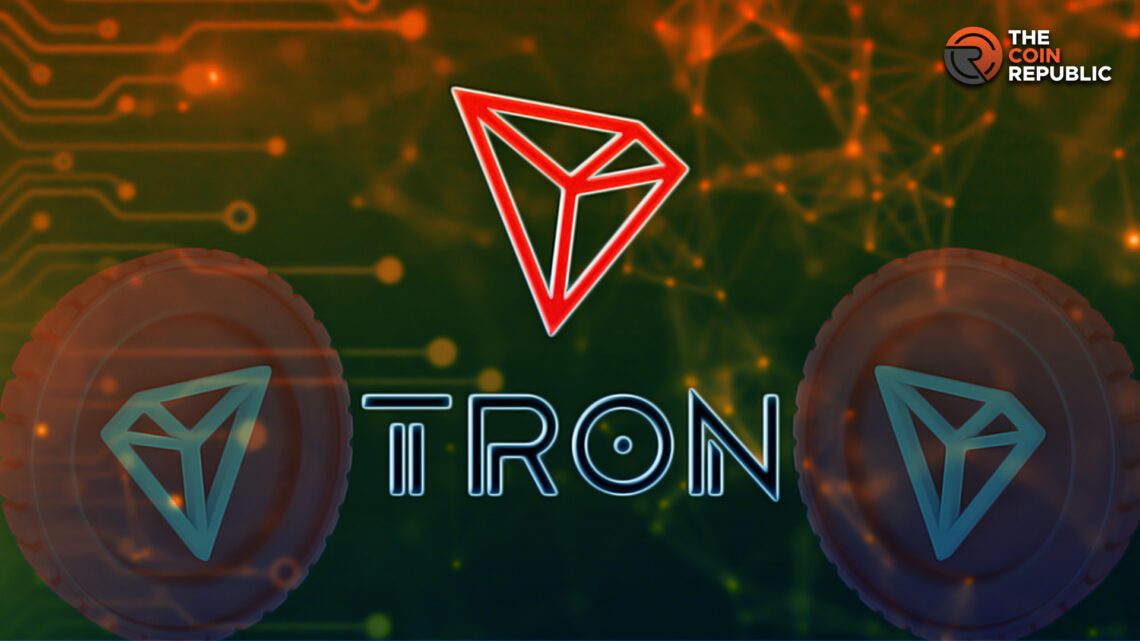- 1 Tron network enables developers to implement smart contracts, build dApps, and launch TRC-20 tokens with no gas fee.
- 2 It became completely decentralized in 2021 after its CEO resigned, making room for a community-driven DAO.
How Does The Tron Network Work?
Initially built as a layer-2 protocol on the Ethereum network, Tron is a community-governed blockchain that focuses on decentralizing the internet and empowering developers and users. It enables developers to build decentralized applications (ranging from gaming, finance, multimedia applications, and NFTs) on its blockchain and run them securely through its virtual machine. The Tron Virtual Machine (TVM) acts as an operating system for developers to execute smart contracts. It is compatible with the Ethereum Virtual Machine (EVM), meaning that developers can import their dApps from the Ethereum network and mint TRC-20 tokens without incurring extra fees.
To give developers flexibility while creating applications, TVM uses a bandwidth and energy model. When you freeze your TRX tokens in a Tron wallet for a period of time, the network rewards you with bandwidth and energy. This allows you to perform transactions within dApps on the network without paying for transaction fees.
Tron Energy is a resource that covers the computational effort needed to build dApps. When you are rewarded with Tron Energy for freezing your tokens, you don’t have to pay extra for computational resources while building applications.
The Tron network is made up of three layers: the Tron Virtual Machine, its consensus protocol, and smart contracts running on the Core Layer. While it is written in Java, it is supplemented by other high-level languages. The Storage Layer acts as the storage system of the network. It uses a graph database to represent and store blocks and updates to the state of the network. The Application Layer creates an interface for building decentralized applications and customized wallets.
How Does the Tron Consensus Protocol Work?
The consensus protocol is an agreement system that appoints bookkeepers on the network. These bookkeepers verify transactions, create new blocks, and broadcast updates on the state of the network.
Tron uses the TPOS consensus protocol, which is a combination of the Delegated Proof-of-Stake protocol (DPOS) and the practical Byzantine Fault Tolerance (PBFT) consensus protocol.
To be selected as a bookkeeper, users are required to stake their TRX tokens. Nodes that stake their tokens can then vote for bookkeepers who will create new blocks. The top-voted 27 nodes become the Super Representative (SR), who validates transactions and adds new blocks, while the nodes ranked between 28 and 127 in the voting process become Super Representative Partners (SRP). If an SR node goes offline while validating transactions, one SRP will replace that node and retain its block generation reward. Both SR and SRP receive voting rewards for every block created. The PBFT protocol occurs in three phases, which enables fast block confirmation. By combining both consensus mechanisms, the Tron blockchain achieves a fast block confirmation time of 3 seconds and high transaction throughput.
How Do the Tron Testnet and Mainnet Work?
The Tron blockchain is available as both a public and private network. The public network is accessible to anyone with an internet connection and is made up of a Mainnet and a testnet. The Mainnet is the primary Tron blockchain that is connected to crypto exchanges. The price of TRX tokens on the Mainnet is what is monitored by investors.
The public testnet enables developers to experiment with their dApps on a public network before launching them on the Mainnet.
Conclusion
Tron’s evolution from a layer-2 Ethereum protocol to a decentralized blockchain is highlighted by the DAO, which is run by the community. Developers use the Tron Virtual Machine for dApps and smart contracts, taking advantage of a resource model based on TRX coins. Fast transactions are powered by the TPOS consensus system, which combines DPOS and PBFT. Tron’s twin network, which includes the Mainnet and a public testnet, allows developers to innovate before the Mainnet goes live.

Adarsh Singh is a true connoisseur of Defi and Blockchain technologies, who left his job at a “Big 4” multinational finance firm to pursue crypto and NFT trading full-time. He has a strong background in finance, with MBA from a prestigious B-school. He delves deep into these innovative fields, unraveling their intricacies. Uncovering hidden gems, be it coins, tokens or NFTs, is his expertise. NFTs drive deep interest for him, and his creative analysis of NFTs opens up engaging narratives. He strives to bring decentralized digital assets accessible to the masses.


 Home
Home News
News










